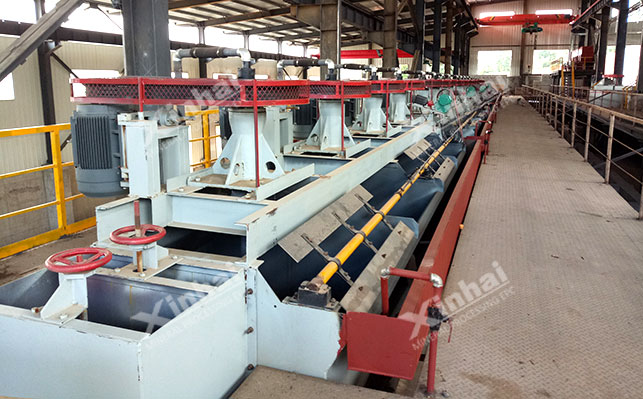The common gangue minerals of spodumene ore include feldspar, mica, quartz, etc. What is the separation method of spodumene and quartz? The reverse flotation process is recommended.

The reverse flotation process is to use lime and dextrin to adjust the slurry, and use cationic collector to reverse flotation quartz, feldspar, mica and other silicate gangue minerals under the pH value of 10.5~11.0.
In order to obtain qualified spodumene concentrate, the products in the tank containing some iron minerals will be thickened and treated with hydrofluoric acid slurry, and then selected fatty acid collector resin acid soap for selection. The obtained product in the tank is spodumene concentrate.
The reverse flotation process is adopted in the Jinsishan Spodumene Concentrator in the United States. They use lime as the pH regulator, add spodumene inhibitors in alkaline media to inhibit spodumene minerals, and select cationic collectors to reverse float gangue minerals. The spodumene concentrate obtained is the product in the tank, which meets the chemical grade product standard.
In order to improve the quality of spodumene concentrate products, the above concentrate products can be selected. In order to reduce the Fe content in the lithium concentrate, HF and resin acid salt are added, and finally foaming agent is added to remove the iron minerals. The obtained spodumene concentrate meets the standard of ceramic spodumene, and can be used as raw materials for ceramic industry.
The foam concentrate obtained from gangue minerals can be further separated to obtain mica, feldspar, quartz and other concentrate products. When the raw ore contains about 1.5% Li2O, the obtained spodumene concentrate contains more than 6.00% Li2O, and the recovery rate is 70.00%~75.00%.
Effective collectors must be matched with appropriate effective inhibitors to play a greater role.
When the pH is 8.0-8.5, calcium gasification is used as the activator, and hydroxamic acid is used for flotation, quartz and spodumene are floating to a certain extent, especially when the cation H reaches above 11.5, the floating of quartz is irrepressible, so it is preferred to float, and corresponding inhibitors must be added.
This shows that inhibitors play an important role in spodumene flotation, and spodumene cannot be separated from quartz and other minerals without inhibitors. As we all know, sodium carbonate is an inorganic salt and a commonly used depressant for spodumene flotation. It can inhibit quartz, silicate and aluminosilicate minerals, and is also a dispersant of slime.